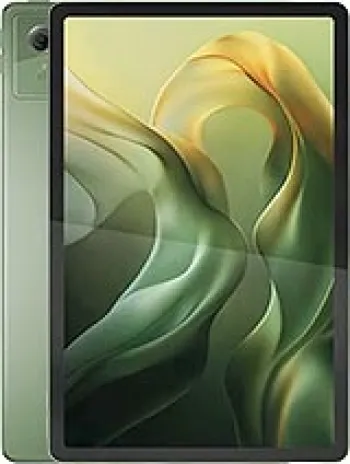
Overview of the Motorola V226
The Motorola V226, announced in the fourth quarter of 2004, is a classic feature phone that marks an era before the dominance of smartphones. While the device may appear simple by today's standards, it was a practical communication tool that provided essential connectivity with a few additional features for entertainments and utility.
Network and Connectivity
The Motorola V226 uses GSM technology, supporting 2G bands on GSM 900, 1800, and 1900 frequencies. It includes GPRS class 10 for basic data transmission but lacks EDGE support, meaning its data capabilities are quite modest compared to later phone models. Bluetooth, WLAN, and advanced positioning technologies like GPS are not available on this device, reflecting its primary function as a tool for voice calls and basic messaging.
Design and Build
The V226 sports a classic clamshell design, measuring 83.5 x 44 x 25 mm and weighing in at 103 grams. This compact size made it portable and convenient, especially for users who preferred straightforward devices. The phone uses a Mini-SIM card and features a robust silver exterior that fits snugly in the hand. Its form factor and material choice underscore the focus on durability and functionality.
Display
This device features a CSTN display capable of showing 65K colors. While the size of the display isn't specified, it resolves images at 128 x 128 pixels in a 1:1 ratio, suitable for basic icons and text. Although it doesn't compare to the expansive and high-resolution displays of modern devices, it was adequate for its time, delivering basic visual output for calls, messages, and minimal graphics.
Memory and Storage
Internally, the Motorola V226 offers 1.4MB of storage space. There is no expandable card slot option, which means storage management for contacts, messages, and a few basic downloaded items was crucial. The phonebook could store up to 1000 entries, which was quite generous, and it supported photo call functionality, allowing users to associate images with contacts. Additionally, it maintained call logs for 10 dialed, 10 received, and 10 missed calls.
Camera
The phone features a VGA main camera, allowing for rudimentary photography and video capture. The quality, given the 0.3MP sensor, is minimal but was an appreciated feature at the time, enabling users to take photos and small video clips on the go. However, a front-facing or selfie camera is not available.
Sound and Alerts
The Motorola V226 includes a loudspeaker and supports vibration alerts along with downloadable polyphonic and MP3 ringtones, as well as a ringtone composer for personalized sounds. This customization was one of the fun aspects of feature phones that users enjoyed exploring.
Communication Features
The device supports SMS, EMS, and MMS messaging. It also features instant messaging, quite advanced for that period, offering users a taste of continuous online communication. The browser, WAP 2.0/xHTML, enabled basic web connections, primarily text-based due to the limited speed and screen size.
Games and Applications
While the V226 isn’t a gaming powerhouse, it does come pre-loaded with a puzzle game, "MJ Puzzle." Additionally, Java MIDP 2.0 support broadened its capabilities, allowing users to run basic Java applications and expand the phone’s functionalities marginally.
Battery Life
The device is powered by a removable Li-Ion battery, which was standard at the time. While specific battery capacity and life details are not provided, phones of this era were known for impressive standby and talk times compared to their smart counterparts today due to less demanding hardware and software.
Conclusion
The Motorola V226 is a representative of its time — simple, user-friendly, and primarily focused on voice and text communication with a few supplementary features. Despite the technological advancements since its release, devices like the V226 paved the way for mobile communication's evolution. With its sturdy build and essential functionality, it remains a reminder of a pivotal phase in the mobile phone industry.
Key Features of Motorola V226
- Compact Dimensions: 83.5 x 44 x 25 mm
- Lightweight: Weighs only 103 g
- GSM Technology: Supports GSM 900 / 1800 / 1900
- Colorful Display: CSTN, 65K colors with a resolution of 128 x 128 pixels
- Phonebook Capacity: Stores up to 1000 entries with Photo call feature
- Camera: VGA Camera with Video recording capability
- Sound Features: Loudspeaker and supports MP3 ringtones
- Messaging Options: Supports SMS, EMS, MMS, and Instant Messaging
- Java Support: Yes, with MIDP 2.0
- Game Included: MJ Puzzle
- Battery: Removable Li-Ion battery
Drawbacks of Motorola V226
- Lacks support for EDGE network technology, limiting data speeds to GPRS only.
- No support for external storage (No card slot).
- Very limited internal memory of just 1.4MB.
- No front-facing camera for selfies.
- No support for Wi-Fi, Bluetooth, or GPS, limiting connectivity options.
- Absence of 3.5mm headphone jack for standard audio connections.
- No FM radio functionality.
- Uses a proprietary USB connection, which can be less convenient than more common standards.
- Discontinued status means no more official support or service updates.
- Relatively bulky design and weight (103 g and dimensions) by modern standards.
- No EDGE support limits mobile data capabilities.

View Also
More Phones
All Rights Reserved +14266 Phones © Mobilawy 2025

























